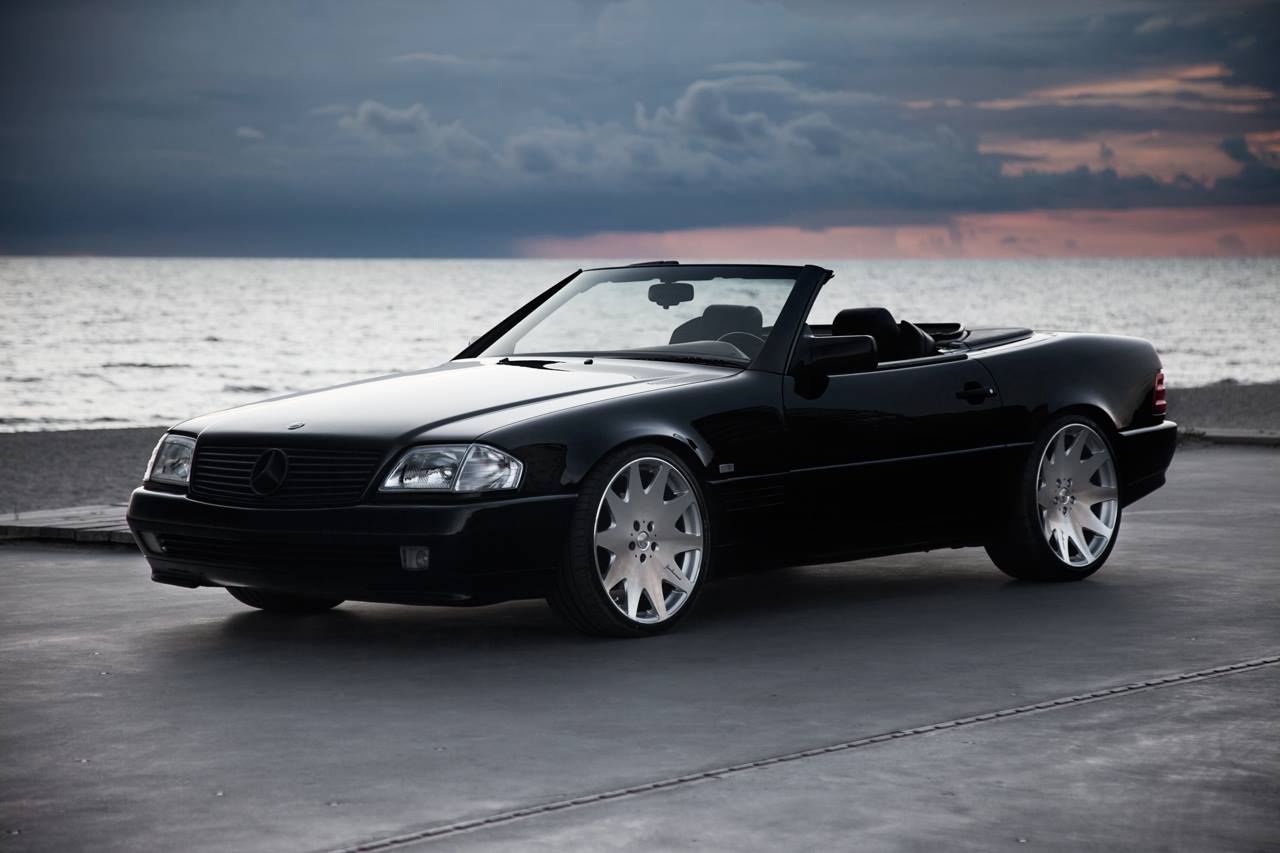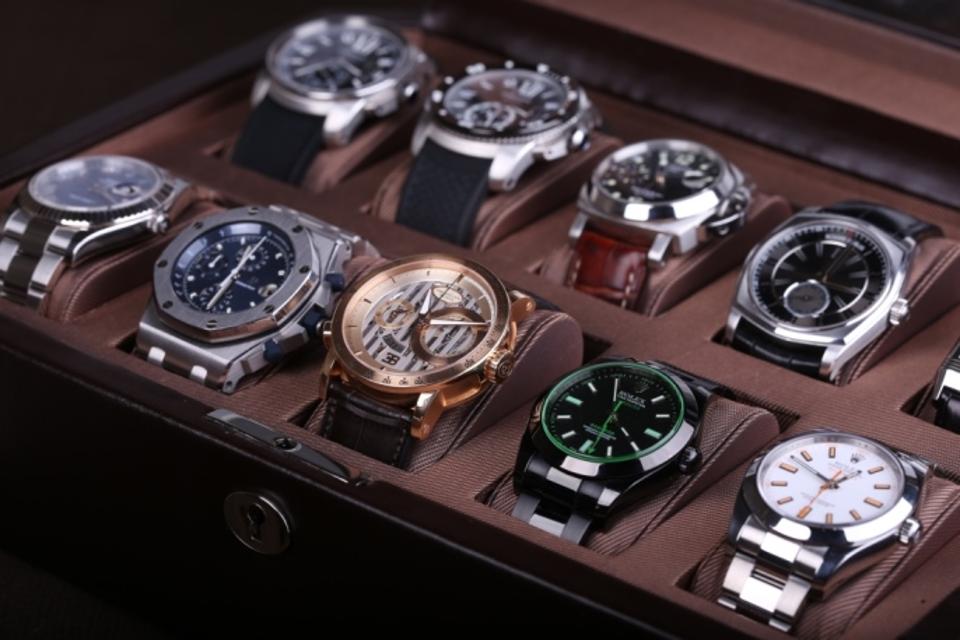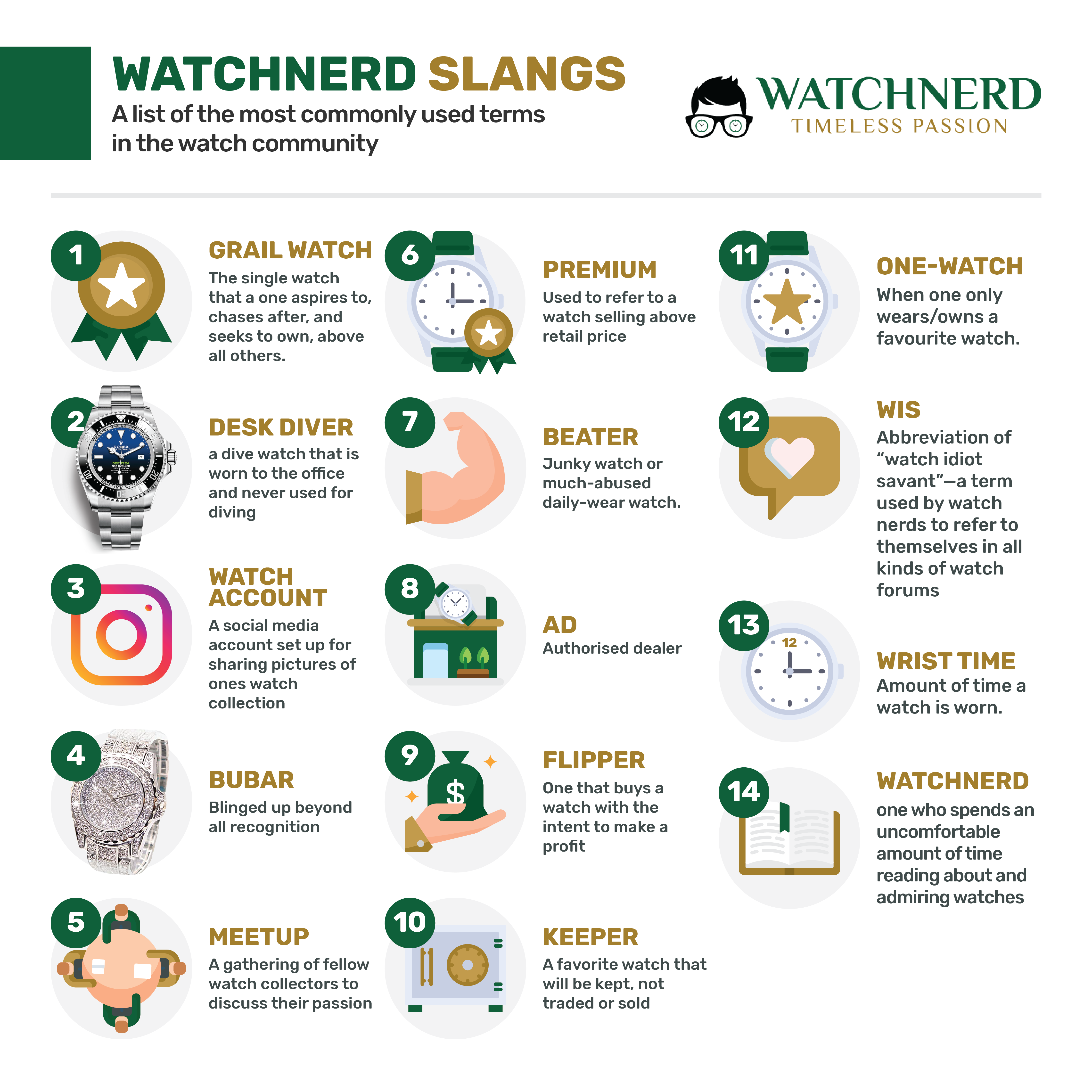I det senaste numret av Greenlight Magazine så har Daniel äntligen börjat ta upp ämnet klockor = )
Och jag ska hjälpa honom att hålla det vid liv i framtiden är det tänkte.
Verkligen jättekul =)
Och han började med ett toppeninlägg.
En enkel lista om vilka ord du behöver kunna inom klockvärlden.
Jag tänkte att jag klistrar in Daniels Ordbok, lägger till mina egna kommentarer, och kanske några ord till.
Jag tror att jag täckte det mesta i detta gamla inlägget.
Men det är alltid kul med ett nytt inlägg hoppas jag.
Det jag lägger till kommer att se ut såhär.
Resten av Daniels text taget ifrån tidningen.
Klocktermologi
Vi tänkte göra dig lite bättre på facktermologin som
finns inom klockvärlden, så du kan bli lite bättre
i steget till att bli en entusiast i dessa mekaniska
underverk. Nedan följer en del vanliga begrepp inom
klockvärlden.
Boett
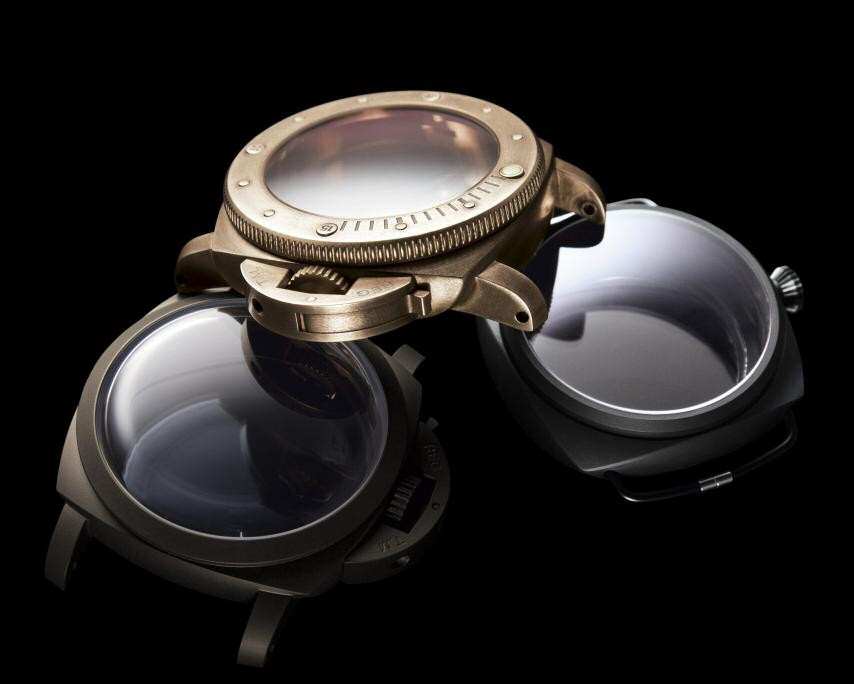
Detta är själva huset som urverket ligger i.
Man kan säga att detta chassit och urverket är motorn.
Andra ord i koppling är boettlock och det är baksidan av klockan, vilket man avlägsnar när man skall
komma åt urverket.
Bezel

Det är ringen som går runt själva glaset och omfamnar själva urtavlan. Denna kan vara vridbar på en radmodeller men finns även som fast.
Ja detta kallar vi oftast bara för ringen, ibland kransen.

Referensnummer
Detta är samma som modellnummer.
Det är ett nummer som berättar vilken typ av tillverkningsreferens
klockan har.
Exempel: Rolex Datejust ref. nr: 1601, 16013, 16233
De olika numrena berättar olika tillverkningsår och
skiljer sig en del emellan dessa både i urverk och
utformning. Det är fortfarande en modell Datejust
men med olika tillverkningsreferenser.
Ett ref.nr behöver inte heller innehålla någon som helst vettig info.
Patek Philippe är rätt duktiga på det, visst du lär dig snabbt vilka modeller det är, vilka som är av guld och stål osv, men överlag så har de ingen särskilt anledning till varför deras klockor har de ref nr som de har.
Rolex kan tyckas ha långa ref nr, men de siffror säger också rätt mycket om klockan, modell, generation, material osv, ibland även färg på urtavlan.
Serienummer:
Detta är det unika nummer som varje dyrare klocka
har som kan koppla medföljande certifikat till rätt
klocka. Även om klockan blir stulen så är det via serienumret man kommer att se om den är just stulen.
Hos de flesta klockor så säger serienumret dig när klockan är tillverkad.
Krona

Detta är det runda hjulet på sidan av klockan, vilket
man använder för att ställa in tiden. Finns olika modeller av kronor.
Så kallade skruvkronor vilket man
skruvar fast för att göra klockan klarar högre tryck
vid till exempel dykning, men vanligt återkommande
på många lyxmärken.
Kronan säger väldigt mycket om klockan.
Jag tycker att alla klockor borde ha kronor som man skruvar in den sista biten, för att om du bara trycker in kronan så anser jag att den klockan inte är det minsta vattentät.
Och tyvärr så kan du köpa en svindyr klocka (Hublot KingPower t.e.x) och de har ingen skruvkrona..
På en Rolex så kan du även se på kronan vilken sorts modell det är och vad för material klockan är av.
Läs mer om det här.
AD
Auktoriserad försäljare och är en förkortning. En AD
är godkänd av varumärket att sälja med inköp direkt
från fabrik och är officiell representant av varumärket. De är också de som enligt tillverkaren bör utföra
serviceåtgärder på klockorna och sköter om garantiförfaranden från tillverkarna.
AD står för ”Authorized Dealer”.
Det är oftast butiker som är återförsäljare för flera olika märken.
Sen har vi vissa få märken som främst säljer sina klockor via sina helt egna butiker där enbart deras märke säljs, som t.e.x Panerai.
Gråhandlare
Det är till skillnad från AD en som säljer klockor men
är inte är utvald av tillverkarna att officiellt bedriva
försäljning. Det betyder dock inte att man är sämre
när det gäller service eller kundåtaganden.
Gråhandlare arbetar även en del med begagnade klockor
och de flesta gråhandlare har mycket gott renumé i
branschen.
För mig så är ”gråhandlare” samma sak som resellers.
Antingen så har de helt nya klockor där det redan är skrivna första ägare på dem, i något konstigt land.
Eller så säljer de lägg begagnade, hypade modeller till överpriser.
Det är bara i New York som jag har stött på butiker som säljer nya och begagnade klockor tillsammans, och där det ser legit ut.
Vi har flera gråhandlare i Sverige som aldrig vill förklara vart klockorna kommer ifrån, och när du ska serva din klocka så ska du skicka den till dem, istället för till Rolex.
Nope, sånt där gillar jag verkligen inte.
Tavla

Med tavla menas helt enkelt urtavlan och den
finns i mängder av påhittade synonymer. Exempel – Spider, Guilt, Panda eller liknande
Urtavlan kallas oftast för ”Face” eller ”Dial” på engelska.
Och precis som Daniel skriver så får de flesta klockor sitt smeknamn grundat på färgen på urtavlan.
Quartz urverk
Ett Quartz-ur drivs med hjälp av ett batteri.
I detta inlägget nedan så har jag ett par andra bra inlägg om ämnet länkade.
Mekaniskt-/manuellt urverk
Dessa vrids upp genom att skruva på kronan.
Det gör att man måste vrida upp uret för att få
det att fungera.
När du skruvar på kronan på ett manuellt urverk så spänner du en fjäder som sedan får klockan att ticka.
Här har jag en massa inlägg om det ämnet.
Olika Urverk : Skillnaden mellan Quartz, Mekaniskt och Automatisk Urverk
Automatiskt urverk:
Detta är ett självuppdragande urverk som gör
att du slipper vida upp uret varje dag.
Med hjälp av handens rörelse ger den klockan
energi.
Detta är beviset på att en klocka är dyr enligt de icke insatta.
”Man bara skakar på handen så går klockan för evigt”
Well..
Till skillnad från ett manuellt urverk där du själv spänner fjädern, så i ett automatiskt urverk så har du en vikt/pendel som snurrar när du rör klockan, och sen i sin tur spänner en likadan fjäder som får klockan att ticka.
OBS! Billiga och fejk-Kina-crap kan också ha automatiskt urverk.
COSC
Contrôle Officiel Suisse des Chronomètres, är
en branschstandard för urverkts kvalitét i att
hålla tiden.
Quickset
Detta gäller klockor med datumhjul.
Det betyder att man kan ställa datumet med exempelvis kronan.
Klockor utan Quickset måste
snurras runt 24-timmar för att ändra datum.
Det gör att om du inte använder klockan varje
dag kan detta bli lite ansträngande.
På vissa icke vettiga urverk så måste du alltså snurra minutvisaren och då timvisaren två hela varv för att byta datum.
De flesta vettiga klockor har ett eget steg när du drar ut kronan där du ställer enbart datumet.
Vissa klockor kan du ändra timvisaren en timme i taget för att ändra datum.
Och vissa klockor t.e.x vissa Panerai och Corum modeller, har en knapp på boetten enbart för att ändra datum.
Denna knappen sitter så du inte kan råka komma åt den och ändra datum.
Till en Corum så får du en superlyxig penna att ändra datum med.
Luggholes
Med detta menas att klockan har små hål på
boettet vid infästning till länken. Detta för att
man skall kunna byta band eller länk enklare.
Vanligt på äldre klockor och speciellt Rolex.
”Luggsen”/ är ”hornen” som går ut från boetten, där remmen sitter i mellan. Vissa svenskar kallar dem för ”skänklar”

Sedan så sitter remmarna på olika sätt, sprintar, sprintar med fjäder (både de alternativen är crap), skruvar osv.
När du ska beställa en ny rem så mäter du alltså avstånden mellan luggsen för att se om du ska ha en 20-22-24-26 mm rem.
Ja det finns en massa andra storlekar också, men de är de vanligaste.
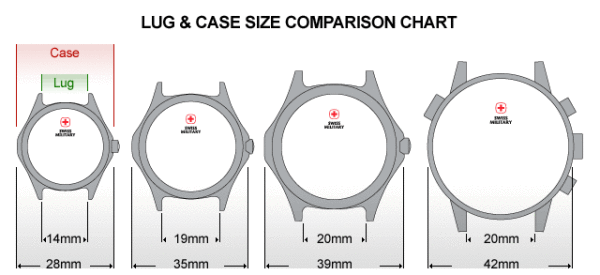
ETA
Detta är något du kommer att se när du handlar med klockor. ETA är en av världens största tillverkare av urverk och delar till urverk.
Många kvalitetsur använder delar från ETA,
finns så klart fler tillverkare som exempelvis
Lemania, men ETA är mer vanliga. Exempel
på varumärken som använder ETA ur är Breitling och äldre Tudor
ETA refererar till Schweiz största urtillverkare, de tillhör ”The Swatch Group Ltd”
Det är helt ärligt lättare att säga vilka som INTE använder sig av ETA-urverk än de som gör det.
Och även de som påstår att de har egna urverk, har OFTAST urverk grundade på ett ETA-urverk, som de sen har modifierat för att kunna kalla för sitt egna.
Det är som med den gamla Rover V8an som allt och alla använder förr.
Några av de som INTE använder sig av ETA urverk NUMERA (många av dem har alltså gjort det) är bland annat Rolex, Patek Phillipe, Panerai, Omega, Montblanc, Breitling, Cartier, A. Lange & Söhne, och Jaeger-LeCoultre.
Inhouse:
Med detta menas att tillverkaren har utvecklat
och tillverkar urverket själva och inte lånat
delar från exempelvis ETA.
Som sagt, många gånger så kallar urmakare sina trimmade ETA urverk för In-House, och det är en ständig fråga om hur mycket man behöver ändra på ett urverk för att få kalla det för sitt egna In-House.
Se det som att jämföra Mercedes-Benz och BRABUS.
Det är väldigt få urtillverkare som verkligen tillverkar ALLT själva, från skisser till skruvar.
In-house Watch Movements Explained | The Classroom: S01, E08
Power reserve
Det klassiska är att en klocka med mekaniskt urverk, antingen manuellt eller automatiskt, håller i 48 timmar innan det stannar, om du inte rör klockan alls det vill säga.
Men vissa klockor håller i flera dygn.. T.e.x en Panerai 10-Days håller i hela 10 dygn!
Du kan alltså skruva upp/bära din klocka, låta den ligga i 9,9 dygn, ta upp den och den tickar fortfarande och håller tiden..
Det är amazing.
Detta kallas iallafall för Powerreserve.
Caliper
Detta är urverket, man kallar det mer för Caliper än movement på engelska.
Säger man urverk så menar man alltid ett mekaniskt urverk, dvs ett urverk med en massa delar som drivs av en fjäder.
Det är VÄLDIGT unikt med klockor som har ett QUARTZ urverk, dvs ett mekaniskt urverk MEN som drivs av ett batteri.
VÄLDIGT unikt.
Så till 99,99%, om någon säger att deras klocka har ett ”QUARTZ-urverk” så är han dum i huvudet.
Och nej det är inte bara Rolex som har flytande sekundvisare.
Många mekaniska urverk har sekundvisare som flyter, mer eller mindre, även en Rolex tickar 5 steg i sekunden.
En batteridriven klocka tickar en sekund i taget.
Frequency
Detta är hastigheten som urverket tickar brukar man säga, men det rätta är att det mäter hur fjädern rör sig.
Detta är VERKLIGEN djupdykning att sätta sig in i olika klockors olika frekvenser, vad som är bra eller bäst osv.
Armband
Det är fel att kalla det för armband tycker jag.
Men säger man armband eller länk så menar man någon slags stål.
Säger man rem/strap så är det tyg, gummi, läder osv.

Komplikationer
Kortfattat så är det funktioner.
De som tillverkar High-End klockor vill gärna att deras urverk ska vara byggd på så många delar som möjligt, ha så många funktioner som möjligt, och vara så komplicerat som möjligt så ingen annan kan kopiera det.

OBS!
Missa inte att läsa GreenLight Magazine #1 – 2019
UPDATE
Ja här är lite nya ord som man kanske kan ha lite koll på iallafall om man stöter på dem.
Här har jag ett inlägg om termer du vill kunna om du ska snacka om Rolex klockor.

Här är några inlägg om urverk.
75 Watch Terms You Need to Know – A Crash Course to Watch Collecting Terminology
60 Watch Terms You Need to Know – A Crash Course in Watch Collecting Terminology (Part 2)
4 Watch Complications You Need to Know (Plus a Bonus!)
https://hiconsumption.com/glossary-watch-terms/
The 60 Terms Every Watch Lover Should Know
Automatic: Mechanical watch movements that are able to continue running without having to be manually wound, so long as the watch is worn on the wrist. They accomplish this feat thanks to a weighted rotor that connects to the movement’s winding mechanism. As you move your wrist naturally throughout the day, the rotor spins and winds the mainspring, thus providing an automatic watch with the necessary energy to continue running.
Barrel: The disc-shaped home for the mainspring in a mechanical watch. It houses and controls the mainspring, governing the release of its stored energy to power the watch.
Bezel: The ring that surrounds the crystal on a watch. Bezels take on many forms. There are sterile bezels that match the case material, ornamental bezels that are executed with decoration, sometimes in a different material from the case, and there are functional bezels. The latter include dive bezels that rotate in one direction and feature markings for counting elapsed minutes, and GMT bezels that rotate in both directions and feature 24-hour markings for tracking a second time zone.
Bracelet: A metal watch strap. Often made up of removable links and usually constructed from the same material as the case, bracelets are affixed to the wrist with a clasp and are typically attached to the case via spring bars.
Bridges: The pieces of metal that hold a watch movement together. Bridges attach the gears and other mechanisms to the mainplate (the base of the movement).
Caliber/Calibre: A term used to designate different movement designs, with the spelling of the word varying by brand.
Case: The main body of the watch, the case houses the movement, dial, hands, crystal, bezel, and lugs. The bracelet or strap is then attached to the case to complete the watch.
Caseback: The backside of the case, this must be removed in order to gain access to the movement. They can be affixed to the case with pressure, they can be screwed on, or they can be applied with screws. Casebacks can be solid or exhibition/display, with the latter featuring a crystal window that allows for a view of the movement.
Chronograph: A stopwatch complication. Chronograph watches generally feature a central seconds hand that remains static until activated via a pusher. Once running, the chronograph will track seconds (and often smaller increments) until it is stopped by pressing the pusher a second time. Pressing a second pusher will reset the complication on most chronograph watches. Many examples of this complication also feature subdials for tracking the elapsed minutes and hours of the chronograph.
Chronometer: A watch movement that has passed certain rigorous criteria for accuracy and precision, meeting standards set by a third party not involved in the manufacture of the watch.

Clasp: The assembly that secures a bracelet to the wrist. With the clasp open, a bracelet can be slid onto the wrist, and closing the clasp will prevent the watch from falling off the wrist. Clasps can close via either a friction-based or button mechanism. The clasp equivalent on most watch straps is a simple pin and buckle, which works similarly to a belt.
Complication: Any function performed by the movement on a watch that does something other than tell the time. Common examples include the chronograph, calendar, and GMT complications.
COSC: The Contrôle Officiel Suisse des Chronomètres, this is the most common body responsible for certifying chronometers. COSC only certifies Swiss watches, with just 3% of the industry receiving the designation per year. COSC-certified watches must keep time at a daily rate of no more than −4/+6 seconds per day.
Crown: The cylindrical dial protruding from the case that is used to set the time in most watches, wind the movement in a mechanical watch, and sometimes perform other functions, like change the date. The crown connects to the movement via the crown stem, and it is most frequently found on the right side of the case. Crowns can either be push/pull or screw-down, with the latter aiding in the watch’s water resistance.
Crystal: The clear layer that protects the dial and hands of the watch. Crystals are most commonly made from one of three materials — sapphire, mineral glass, and plexiglass — and more information can be found on each below.
Date Window: A cutout in the dial for displaying the date in a watch with a calendar complication. The date appears thanks to a date wheel on the top side of the movement, which rotates once every 24 hours. Similar windows can also show the day of the week, month, and rarely, year, in watches with those complications.
Decoration: Ornamentation that has been applied to the movement of a watch. Movements can be decorated by machine or by hand, with both adding additional cost to the production of the movement (the latter adding considerably more). Common types of movement decoration include perlage, Côtes de Genève, and snailing.
Deployant: A type of clasp for non-bracelet watch straps that allows them to function more like a bracelet. Deployant clasps enable the wearer to keep their strap at the same size without having to unbuckle the watch every time they remove it. Like bracelet clasps, they can function via either friction or a button system.
Dial: The face of the watch that houses the hands and indices and displays the time. Information from other complications is also frequently displayed on the dial, along with branding and model information.
Escapement: The assembly that regulates timekeeping in a mechanical watch. The vast majority of mechanical watch movements utilize a lever escapement, which features a balance wheel that releases stored energy from its inner hairspring. As the balance wheel oscillates back and forth, it interacts with the forked side of the lever. The other side of the lever contains two pallets that interact with a toothed escape wheel, turning it at a consistent rate. The escape wheel is connected to a gear train that drives the hands, allowing the watch to keep accurate time.

Finishing: How the surface of the watch has been treated. The term usually applies to the case and bracelet but is sometimes also used to describe the condition of the hands, indices, or movement. Brushing and polishing are common types of finishing, and fine finishing is one of the main expense drivers of luxury watches.
GMT: A complication that tracks two time zones simultaneously by way of a fourth hand that rotates once per 24 hours, coinciding with either a 24-hour bezel or dial markings of 24 hour increments. The first watch to feature such a complication was the Rolex GMT Master, which was released in 1954.
Hands: The pieces that indicate time on an analog watch. Most watches feature different hands for hours, minutes, and seconds, though complicated watches can feature additional hands. The hands are attached to the movement and are displayed above the dial, where they are read against the indices.
Haute Horlogerie: A term used to describe the most high-end and complicated mechanical watchmaking. Haute horlogerie timepieces make up the upper echelon of luxury brands and often cost hundreds of thousands of dollars.
Helium Escape Valve: A feature of some professional dive watches that allows for the escape of helium atoms. During saturation dives that utilize helium, some helium atoms can make their way inside a watch due to their extremely small size. During decompression, these helium atoms can release pressure inside the watch, causing significant damage. A helium escape valve, once activated, opens a tiny one-way valve in the watch that allows any helium atoms to escape while decompressing.
In-House Movement/Manufacture: A watch movement that is made by the same company that makes the watch that houses it. As movements require a lot of R&D and investment to create, many watch brands opt to use readily available third-party movements in their watches. Therefore, watchmakers who use their own manufactured movements are typically seen as higher-end.
Index: The hour markers on the dial of the watch. They can be applied or printed, are sometimes luminous, and come in many different shapes and sizes.
Jewels: Synthetic rubies that are used as bearings in watch movements. As they are very low friction, the jewels provide smooth interactions between the moving parts of the watch while preventing wear. Generally speaking, the more complicated a watch movement is, the more jewels it will have.
Links: The segments of a watch bracelet. Connected to each other by either screws or push-pins, links need to be removed in order to size a bracelet to your wrist.
Lugs: – The four horns that protrude from the watch case — two on top and two on bottom. The lugs serve to connect the case to the bracelet or strap.

Lume: Luminous material applied to a watch’s hands and indices (and sometimes other areas) that allows for reading in the dark. Most watches today use non-radioactive strontium aluminate-based luminous paint, often from the brands Super-LumiNova or Lumibrite, rather than the radioactive and dangerous radium or tritium paints seen in the 20th century. A handful of brands use tritium lume in a gaseous form contained within glass tubes, but its radioactivity is too low to be considered harmful.
Mainplate: The solid metal base of the movement upon which all other parts are affixed.
Mainspring: A long, thin metal coil that is wound via the crown or rotor in a mechanical watch. Once wound, the mainspring stores and incrementally releases energy to power the watch over several hours or days.
Manual-Wind/Hand-Wound: A non-automatic mechanical watch that must be wound manually through the crown in order to continue operating without interruption. A manual-wind watch will only run for as long as its mainspring has power (e.g. 42 hours) and will stop running if not wound again before its power reserve runs out.
Mechanical: A watch that requires no battery to run and works via a complex, centuries-old system of gears, springs, and levers. The term is also sometimes used to refer to manual-wind watches only, though automatic watches are also mechanical.
Mineral Glass: Glass that has been tempered to be more scratch-resistant. Used as a crystal material in lower-priced watches, mineral glass is far easier to scratch than sapphire, but it is more resistant to impact.
Minute Track: The markings around the outer edge of the dial, of which there are 60, that allow the hands to track minutes.
Moonphase: A complication that tracks the phases of the moon, with a moon imprinted on a disc that makes one full revolution every 29.5 days. The imprinted moon will have parts of its structure obscured by the dial to correspond with the different phases of the moon, except when it’s full, then there is no obstruction.
Movement: The engine of a watch. Whether mechanical or quartz, the movement powers the watch, controls its timekeeping, and performs any complications.
NATO: A common type of nylon strap that features an extra piece of fabric allowing the watch to remain on the wrist even if one side of the strap becomes separated from the case.

Perpetual Calendar: A calendar complication that accounts for all unique days in each month and even keeps track of leap years. Perpetual calendars never need to be reset in your lifetime as long as the watch remains running (though, realistically, they will need to be serviced by a repair shop at some point).
Plexiglass/Hesalite/Acrylic: A plastic material commonly used for crystals in vintage watches, and rarely in some modern ones. Plexiglass is very easy to scratch, but is highly impact resistant. Its scratches can also usually be buffed out using a compound, unlike other crystal materials. Plexiglass is also non-reflective and is often described as having a “warm” quality.
Power Reserve: The amount of time, in hours, that a mechanical movement can run once fully wound before having to be wound again. Some watches feature a power reserve indicator on the dial as a complication.
Pusher: Buttons on the side of the case that perform specific functions when pressed. These are most often seen on chronograph watches, where they are used to control the titular complication.
Quartz: A battery-powered watch movement that keeps time by running an electrical current through a quartz crystal, causing it to oscillate at a consistent rate. Quartz watches are considerably more accurate than mechanical watches, but they are far cheaper and easier to produce.
Rehaut: The interior area of the case that sits below the crystal and forms a wall around the outside of the dial. Rehauts don’t often perform any function, but on some watches they feature logos (e.g. Rolex) or are home to the minute track.
Rotor: The oscillating weight attached to the back of a mechanical watch that winds the mainspring with movement. Rotors usually cover roughly half the movement, but some watches use a micro-rotor that takes up a fraction of the space, allowing for a better view of the movement.
Sapphire: A highly scratch-resistant synthetic material that is one of the hardest substances on Earth. It is frequently used to make watch crystals due to the fact that it is almost impossible to scratch. Its drawbacks are that it shatters more easily than other materials and it is quite reflective, often requiring the application of an anti-reflective coating.
Skeleton: A dial or movement that has had non-essential pieces removed for transparency. Watches with skeletonized dials allow you to view the watch’s movement through the front crystal.
Small Seconds: A small subdial on the dial that contains a miniature seconds hand, these are seen on watches that do not feature a central seconds hand for timekeeping, like a chronograph.

Spring Bar: Spring-loaded tubes that attach the strap or bracelet to the watch via small holes on the interior of the lugs. Spring bars require special tools to be installed and removed.
Strap: A band of leather, cloth, or rubber that is used to attach the watch to your wrist. Straps function similarly to bracelets and are secured to the wrist via a buckle or a deployant clasp.
Subdial/Register: A small dial within the dial used for displaying different types of information, usually related to complications.
Sweep Seconds Hand: A seconds hand that makes multiple ticks per second — commonly five, eight, or more — that gives the appearance of a smooth sweep across the dial. This is a trademark feature of mechanical watches, as most quartz watches tick once per second.
Tachymeter: Markings on a bezel used to calculate speed, frequently seen in conjunction with a chronograph. E.g. If you are traveling in a car on the interstate and you start your chronograph when you pass a mile marker and stop it at the next mile marker, the chronograph seconds hand will show your approximate speed in mph on the tachymeter.
Telemeter: Similar in appearance in function to a tachymeter, but used to measure distance rather than speed. E.g. If you see lightning, start your chronograph, and then stop it when you hear thunder, your telemeter will show you the approximate distance of the lightning.
Tolerance: How accurate a watch’s movement is rated to be, measured in +/- seconds per day. Most watchmakers will guarantee some level of tolerance, with the most stringent guarantees reserved for chronometers.
Tourbillon: An optional addition to the escapement in some high-end mechanical watches. It consists of a rotating cage that surrounds the entire escapement, with the belief being that the constant rotation will negate any effect that gravity might have on the escapement’s regulation. Tourbillons have not been proven to improve accuracy, and are mainly valued for their craftsmanship and intricacy.
Water Resistance: How much water pressure a watch has been tested to withstand without compromising its functionality. Common ratings include 30m, 50m, 100m, and 200m or more. Generally speaking, 30m water-resistant watches are considered to be only “splash proof,” 50m-rated watches are cleared for wearing while washing your hands, 100m watches are good for swimming, and 200m+ watches are usually qualified for diving.
World Timer: A complication that tells time in 24 time zones simultaneously thanks to rotating 24-hour disk or hand and 24 printed cities on the dial or bezel. While often considered an haute horlogerie complication, world timers are generally not all that accurate, due to the fact that there are over 40 time zones in the world and they don’t accommodate Daylight Saving Time. Like tourbillons, world timers are more valued for their artistry and romance than their functionality.
